The Double Gauss lens, the origin of the Planar, Biotar and Biometar lens designs
Already during his lifetime, Carl Friedrich Gauss (1777 – 1855, born in Braunschweig, Germany, many years later home of the Voigtländer photographic industry), is called princeps mathematicorum, prince of mathematicians. His extraordinary talent was already recognized in elementary school. It is reported about the nine-year-old Gauss that he finished an arithmetic problem in the shortest possible time, which his teacher had assigned to the class to keep the children busy:
1 + 2 + 3 + … + 100 = ?
His trick: Working from the outside in, the young Gauss combines the smallest and the largest number to a sum: 1 + 100, 2 + 99, 3 + 98, …, 50 + 51; this results in 50 times 101 = 5050.
The teacher convinced the overtaxed parents (the father earns a living as a clay mason and house butcher, among other things; the mother can hardly read and write) that their son absolutely must change to a higher school. Later, Gauss ranked among history’s most influential mathematicians.

In 1817, Carl Friedrich Gauss invented the two element Gauss telescope objective lens consisting of closely spaced positive and negative menisci.

Alvan Clark and Bausch & Lomb further refined the design in 1888 by taking two of these lenses and placing them back to back, thereby making a “Double Gauss”. Spherical and chromatic aberration were properly corrected here, but not astigmatism.
Current Double Gauss lenses can be traced back to an 1896 improved design. That’s when Paul Rudolph thickened the interior negative menisci and converted them to cemented doublets of two elements of equal refraction but differing dispersion. He achieved this in the Zeiss Planar of 1896 to correct for chromatic aberration and astigmatism.
Before you continue, it’s worthwhile reading this informative article about the Double Gauss lens design:
https://en.wikipedia.org/Double-Gauss
Welcome back! You may have recognized in that article how many well-known lenses from solid lens producing companies are based on the Double Gauss lens design.
How do Planar, Biotar and Biometar lens designs differ?
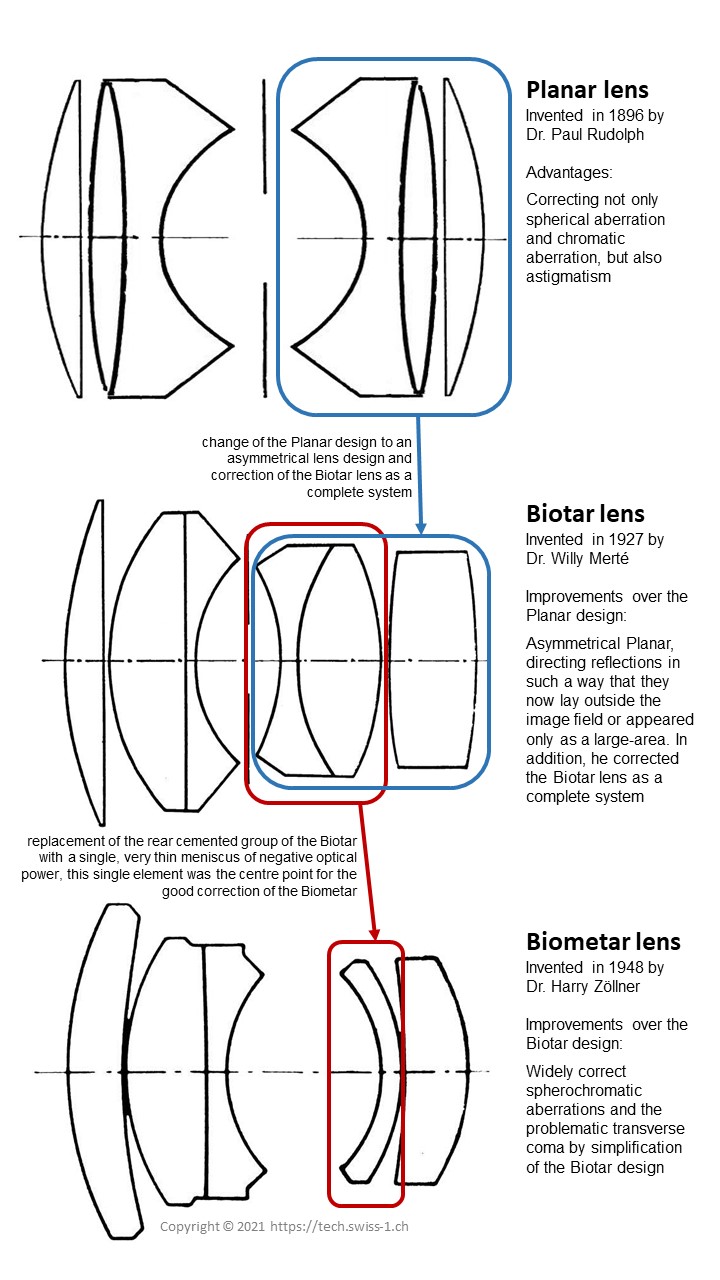
The West German Zeiss used the name and registered trademark Planar for all double Gaussian designs after the war mainly because both the name Biotar and Biometar were in use by Carl Zeiss Jena in East Germany for their lenses already.
Zeiss Planar lens design
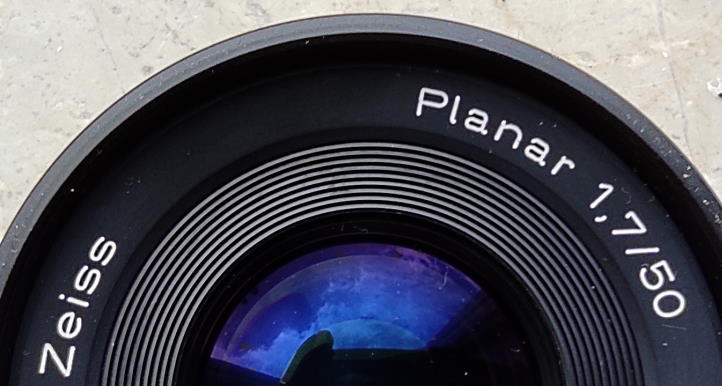
The Planar, invented by Dr. Paul Rudolph for Carl Zeiss in 1896, is the original 6 element in 4 group symmetrical double Gaussian design, characterized by the narrow air space in the middle and the thickening of the doublet element in between.
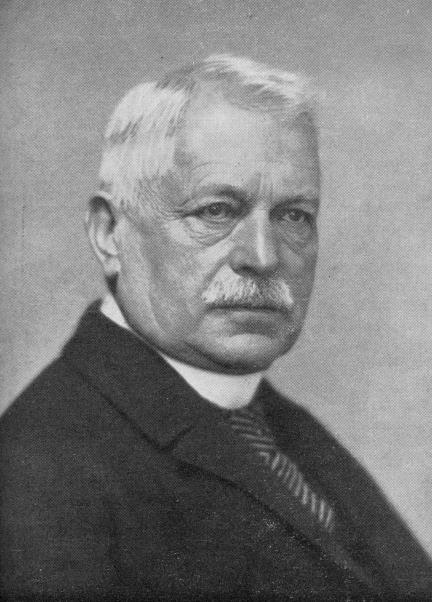
The Planar succeeded in correcting not only spherical aberration and chromatic aberration, but also astigmatism. The Planar also has a low image field curvature, from which the name Planar is derived.
The Planar, and thus the symmetrical Gaussian double lens, also became the starting point for a larger number of other lens types.
Zeiss Biotar lens design
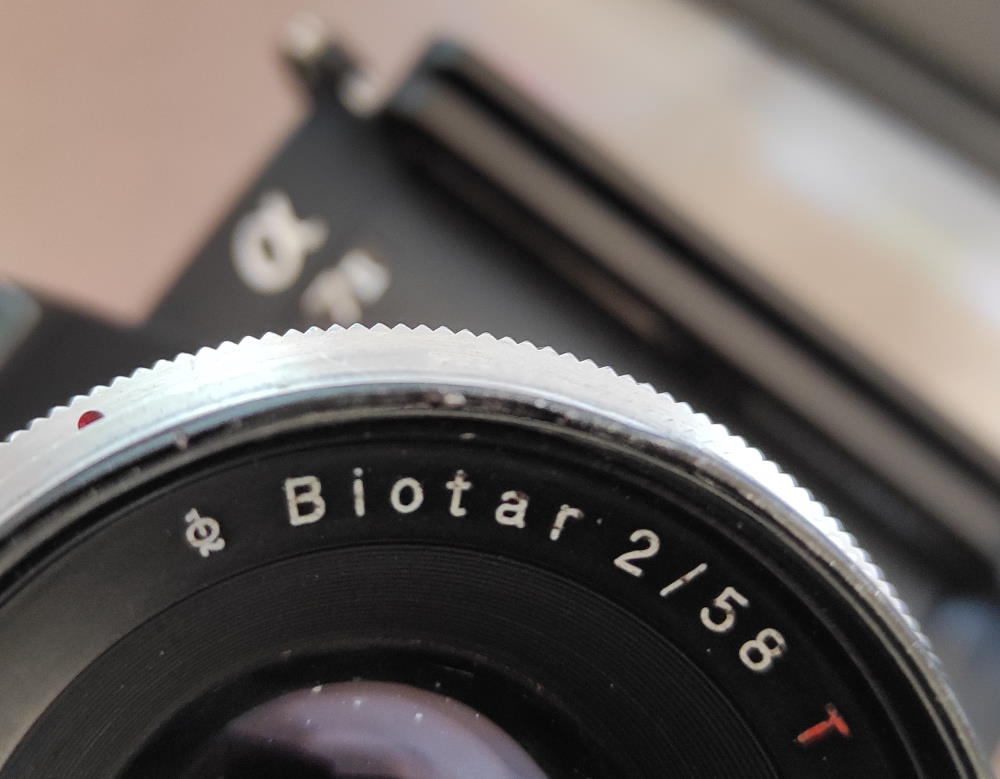
The Biotar is an assymetrical Planar and a perfection of Paul Rudolph’s Planar type.
The first Biotar was designed by Zeiss engineer Dr. Willi Merté in 1927 for use in motion pictures. As with the Planar, the four lenses of the Gaussian double lens are extended by an additional outer lens on each side of the Biotar. The inner two pairs of lenses are cemented, as in the planar. Merté introduced an important asymmetry: the front three-part lens group was made larger overall than the group behind the diaphragm.
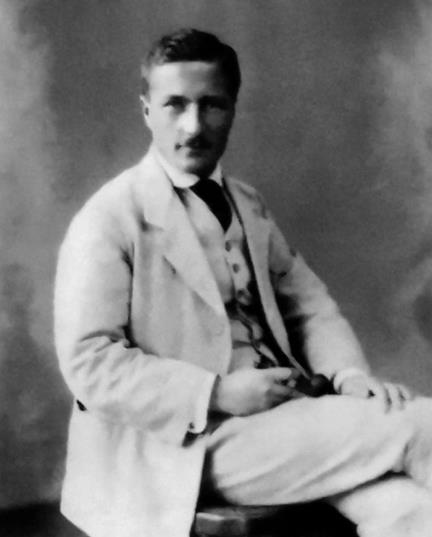
Dr. Willy Merté achieved a decisive breakthrough with his Biotars by directing reflections in such a way that they now lay outside the image field or appeared only as a large-area, diffuse shimmer, which in turn could no longer lead to any disturbing blackening of the layer. In addition, he then completely abandoned the understanding of the Gaussian lens as a symmetrical double lens and corrected his Biotar as a complete system, which enabled him to trim it to high luminous intensities without blatant concessions to imaging performance.
Willy Merté created the Biotar at Carl Zeiss. It was an optimized successor of the Planar lens, which was design in 1936 as the Biotar 58mm f2 “kit lens” for the Kine EXAKTA 35mm camera — the most innovative 35mm film camera before World War II.
In 1949, Carl Zeiss Jena introduced the Contax S camera, the world’s first 35mm SLR mirror camera with an eye-level prism view finder and interchangeable lenses, and the Carl Zeiss Biotar 58mm f2 lens became the standard “kit lens” of the technically advanced Contax S camera.
Read interesting details about the legendary Carl Zeiss Jena Biotar 58mm f2 lens and its Russian copy Helios 44M-4 58mm f2 here:
Swirly Bokeh? The legendary Zeiss Biotar 58mm f/2 vs. the Russian copy Helios 44M-4 58mm f/2 lens
The Russian Helios 44 58mm f2 family of lenses are probably the most widely produced analog camera lenses of the world.
Zeiss Biometar lens design

After the Americans had deported the first group of Zeiss specialists to the US, and then the Soviets a second group to Russia, young doctor of physics Harry Zöllner, who practiced his craft at Voigtländer in Braunschweig until the end of the war, was left as one of the few experienced lens designers in the territory of the Soviet Occupation Zone.
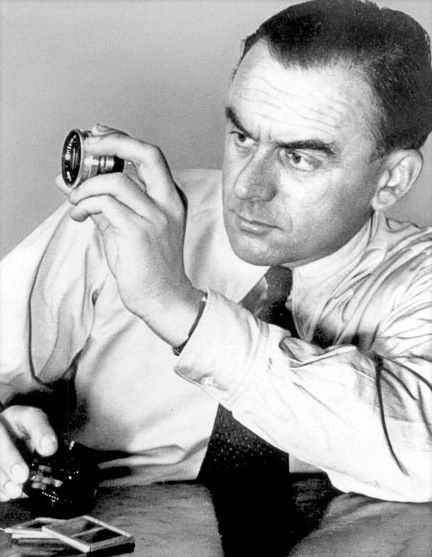
Dr. Harry Zöllner developed the Biometar for Carl Zeiss Jena in 1948 based on the Biotar, benefitting the enormous step forward that lens construction took due to the advancements of glass technology during the war. The Biometar is a redesign of the formula, which is characterized by only 5 elements that have the rear doublet replaced by a significantly curved single element.
Zöllner made a simplification of the Gauss type by replacing the rear cemented group of the Biotar with a single, very thin meniscus of negative optical power. This single element was the centre point for the correction of the Biometar, but it actually didn’t make the Biometar simpler.
Manufacturing such a thin and highly curved meniscus was a huge challenge for an optical company at that time, since this type of element was very hard to centre-grind with the technical means of the era. Not every optical company was able to manufacture them with such required precision. As a result the Biometar could never be a cheap lens.
The Carl zeiss Jena Biometar 80mm f2.8 classic lens for the Praktisix 6×6 can be easily used on a modern full frame mirrorless camera with the right adapter:
Does the modern Canon EF 50mm f1.8 STM lens follow the Biotar lens design type?
A big surprise; I checked the lens layout of the modern Canon EF 50mm f1.8 lens.

Compare the Canon EF 50mm f1.8 STM lens design above to the Biotar lens design and come to your own conclusion. In my view, the question as to whether or not they are similar is easy to answer.
Congratulations to Dr. Willy Merté, whose work has had such an important impact on the camera lens history!
Merté’s Biotar lens design has been used for the most widely produced analog lenses (Helios 44 58mm f2 family of lenses, produced in million of pieces) and is probably the most widely produced digital lens (Canon ED 50mm f1.8 family of lenses).
Learn more about the thrilling story of how the Zeiss company was split into a West German and a East German part after World War II and reunified in 1991:
Olympia Sonnar Carl Zeiss 180mm f2.8 lens Made in West- vs East-Germany, which is better?
Carl Friedrich Gauss’ sons Eugene and Wilhelm emigrated to the United States
Eugene was a successful entrepreneur and banker and became the founder and first president of the First National Bank in St. Charles, Missouri. The marriages of the two “American” Gauss sons produced 15 children, to whom a widely branched offspring can be traced in the the USA. If you are interested in Carl Friedrich Gauss relation to his son Eugene in the USA, read the article “Carl Friedrich Gauss and his children” in the US SCIENCE magazine in 1899 and the letter of his grandson Robert Gauss in 1912.